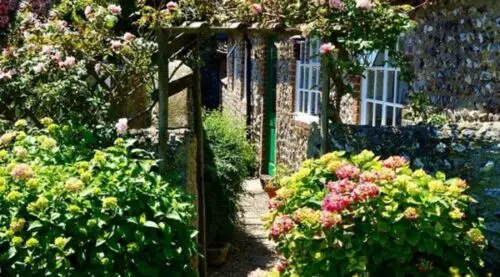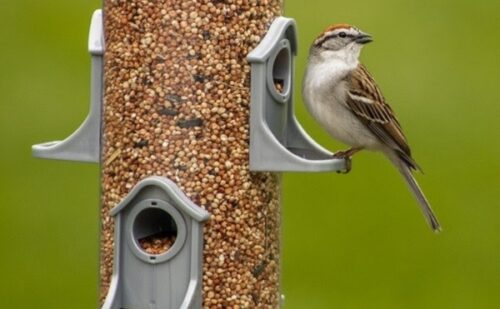Wildlife can add so much fun and variety to your garden. Imagine birds flocking to your feeding nests, hedgehogs roaming through your shrubbery and squirrels scurrying around your trees. A flourishing and bountiful garden is a beautiful place to spend a lazy Sunday afternoon.
But, let’s say you’ve just moved into a new house or this is your first time trying to convert a balcony or a concrete yard into a haven for wild animals, where do you start and how do you ensure you’re attracting the right type of wildlife? To help you out, we’ve put together this simple three-step guide to attracting wildlife to your garden.
As a bonus, you can rest assured that these three simple tips will NOT attract pests like mice and foxes. Let’s get started.

1. Build a Bee Hotel
Bees are vital to the maintenance of our planet. This is because we rely on them to pollinate a huge chunk of the food we eat, including crops, vegetables, and fruit. Plus, who doesn’t love the cathartic hum of bees bopping from flower to flower? For us, it’s the sound of summer.
As for your garden, building a bee hotel is a great way to help both solitary bees thrive and attract more wildlife. First, a bee hotel offers solitary bees a great place to lay their eggs and take up residence. Second, the bees will pollinate all the flowers and crops in your garden. This will attract a variety of wild birds who can use the plentiful foliage as camouflage against predators.
Before you know it, you’ll have both bees and birds settling down in your yard.
Pro Tip: Invest in a bee bomb to help create the perfect meadow for your new buzzing friends. The bomb will help dissipate the seeds to create a wildflower pasture covering 21 square feet.

2. Create a Mealworm Feast
Britain can be a difficult place to thrive if you’re an insect-eating bird. Our temperamental weather can make foraging a grueling task and if temperatures plummet or heavy rains start to fall, birds will have to travel far and wide, burning more energy, to find their food.
Fortunately, you can lend a helping hand to your local insectivorous birds by providing mealworms. High in both fat and protein, mealworms are the premier food in the bird world and can attract some beautiful species, such as Blackbirds, Song Thrushes, and Robins, to your garden. Our advice is to buy dried mealworms. These are often quite a bit cheaper than live mealworms and just as nutritious. All you need to do then is soak them in warm water for thirty minutes, place them on a window or wall-mounted bird feeder and wait. Before you know it, a startling array of feathered friends will hunt down your mealworms for a feast. A beautiful sight to behold.
Pro Tip: To avoid nuisance squirrels or foxes stealing all your mealworms, mount your window or wall feeder at least 15 feet from the ground. Try to avoid placing the feeder too close to tree branches, which can act as the perfect launching point for a daring squirrel.
3. Make a Hedgehog House
Gardens are an increasingly important habitat for hedgehogs. These prickly characters are quickly disappearing from our wider countryside due to overfarming and urbanization.
So, why not let your crafty side run wild and make your garden a hedgehog home? All you need is a large wooden crate with an 11cm x 15cm hole, brambles, hedgehog food, and a dish of water. With these items in place, hedgehogs will quickly flock to your yard for a spot of rest during the day and hibernation through the winter.
Pro Tip: Ensure the hole is no bigger than 11cm x 15cm, that way you can ensure you avoid attracting foxes at night. Always use a dedicated hedgehog food and regularly clean the box to create the perfect, hedgehog-safe home.

Leave a Reply